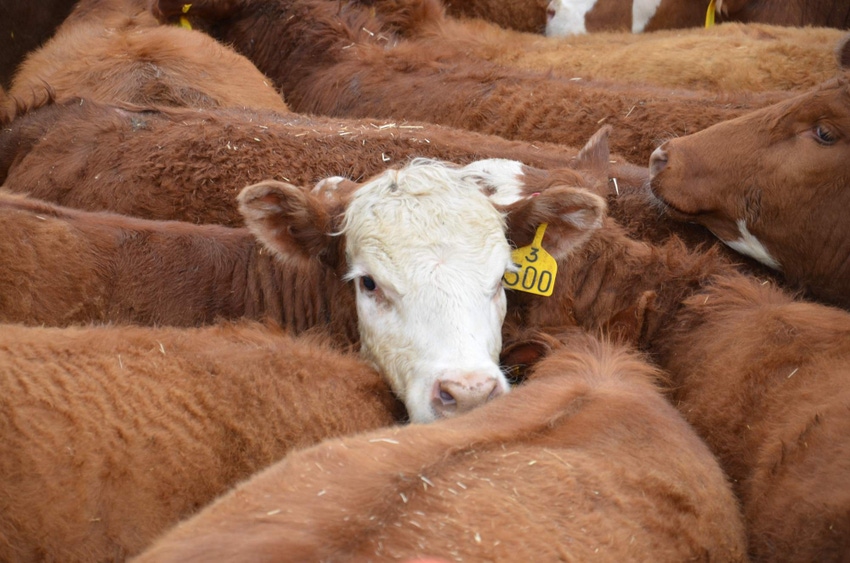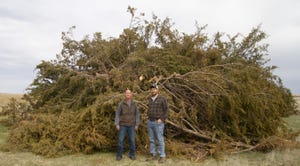Are you ready for another fight over animal ID?
Bringing the various sides in the animal ID debate together to find middle ground continues to be a huge challenge. But it’s a challenge we must meet.

Over the past several years, and particularly so this year, the controversial issue of animal ID and traceability has circled back to visit the beef business. And that’s good, because it’s an issue that beef producers collectively must solve.
The next step in doing that will happen next week at an animal ID traceability forum in Denver, co-hosted by the National Institute for Animal Agriculture (NIAA) and the U.S. Animal Health Association (USAHA). I’ll be there as an interested observer as well as a moderator for one of the sessions.
During the symposium, USDA’s Animal and Plant Health Inspection Service (APHIS) will discuss its recently-released report that summarizes feedback it has received since 2013 on the Animal Disease Traceability (ADT) system now in place in the U.S. Much of that feedback came this year from nine listening sessions that APHIS held in April through July this year.
As a reminder, the national ADT system is a bookend approach that applies to animals over 18 months of age that are moved interstate. Among the questions that APHIS is seeking an answer to is what level of traceability should be considered if we move beyond the basic traceability framework we have now.
Generally, the concerns raised by producers about the ADT system were the same as those raised in a BEEF survey on animal ID. Those concerns include confidentiality and security of the information, liability and cost, among others.
READ: BEEF readers split on animal ID
According to APHIS, while confidentiality of the producer information that’s collected as part of the ADT program is a concern, some of that concern was alleviated when changes were made that placed more responsibility for holding that information at the state level.
Regarding liability, early on, producers were concerned about their liability should a diseased animal be traced back to their ranch when it may have become infected somewhere else along the marketing chain. Lately, the liability concern also includes the liability for potential injury to people or animals when working cattle for tagging or reading the tags individually.
And then there’s cost. Beef producers, especially cow-calf producers, are concerned that the cost of any traceability system be distributed across all sectors of the industry. “In particular, if electronic ID (EID) technology is implemented as the only method of official ID, the cow-calf industry should not cover the cost then the entire industry benefits,” the report says.
RELATED: Do you really write down suspicious truck tags?
Here’s what we learned from the BEEF survey of readers’ thughts on animal ID: For those who don’t individually and separately ID their cattle, 51.5% say that brands and Bangs tags are good enough. Another 21.6% want to know who is going to pay for it, and 16.1% say who they sell their cattle to is nobody else’s business.
Beyond that, readers are concerned with the confidentiality of their information (9%), potential liability from future buyers (7.5%), concern over the technology working properly (7.5%), the fact that it slows down commerce (6.7), and “other” (29.1%).
Most of those who clicked on the “other” response say they don’t see the need and mentioned the labor, time and effort required. “If the sell warrants tagging of our cattle, it will be done. Otherwise this ranch does not add any further stress, cost, etc., to the animal due to re-penning,” said one respondent. “You come brand them,” replied another.
Since the ADT system is a bookend effort to identify breeding cattle, BEEF asked readers if they support a lifetime animal ID system, from birth to harvest. The survey shows that 58% of respondents say yes, while 42% say no.
Of those who support a lifetime, national traceability system, 86.9% say it would be helpful in disease containment and traceback, 67.2% think it would thwart cattle theft and speed recovery of stolen animals, 64.7% say it gives the U.S. a better chance to enter more foreign markets, 60.2% say it will help with consumer transparency, and 57.1% say it will add value to their calves. Totals add up to more than 100% due to multiple answers.
Of those who do not support development of a lifetime, national animal ID and traceability system, the majority, at 76.6%, wonder who will pay for it. Beyond that, 47.1% are concerned about data confidentiality, 40.4% say who they sell cattle to is nobody else’s business, 40.2% say brands and Bangs tags are good enough, 30.1% are concerned about potential liability from future buyers, 29.2% say it slows the speed of commerce, 19.2% worry if the technology will work right, and 15.5% say “other.” Of those, the biggest concern is greater government involvement in the cattle business. Totals add up to more than 100% because of multiple responses.
As our survey shows, there are those who see real benefit to a national animal ID system and there are those who are opposed to it for any reason, regardless of any potential benefit it may bring to them or to the beef business as a whole. Solving that riddle has been a huge challenge for the beef industry, one we have yet to overcome.
But we must. Any other option isn’t an option at all.
About the Author(s)
You May Also Like


.png?width=300&auto=webp&quality=80&disable=upscale)
